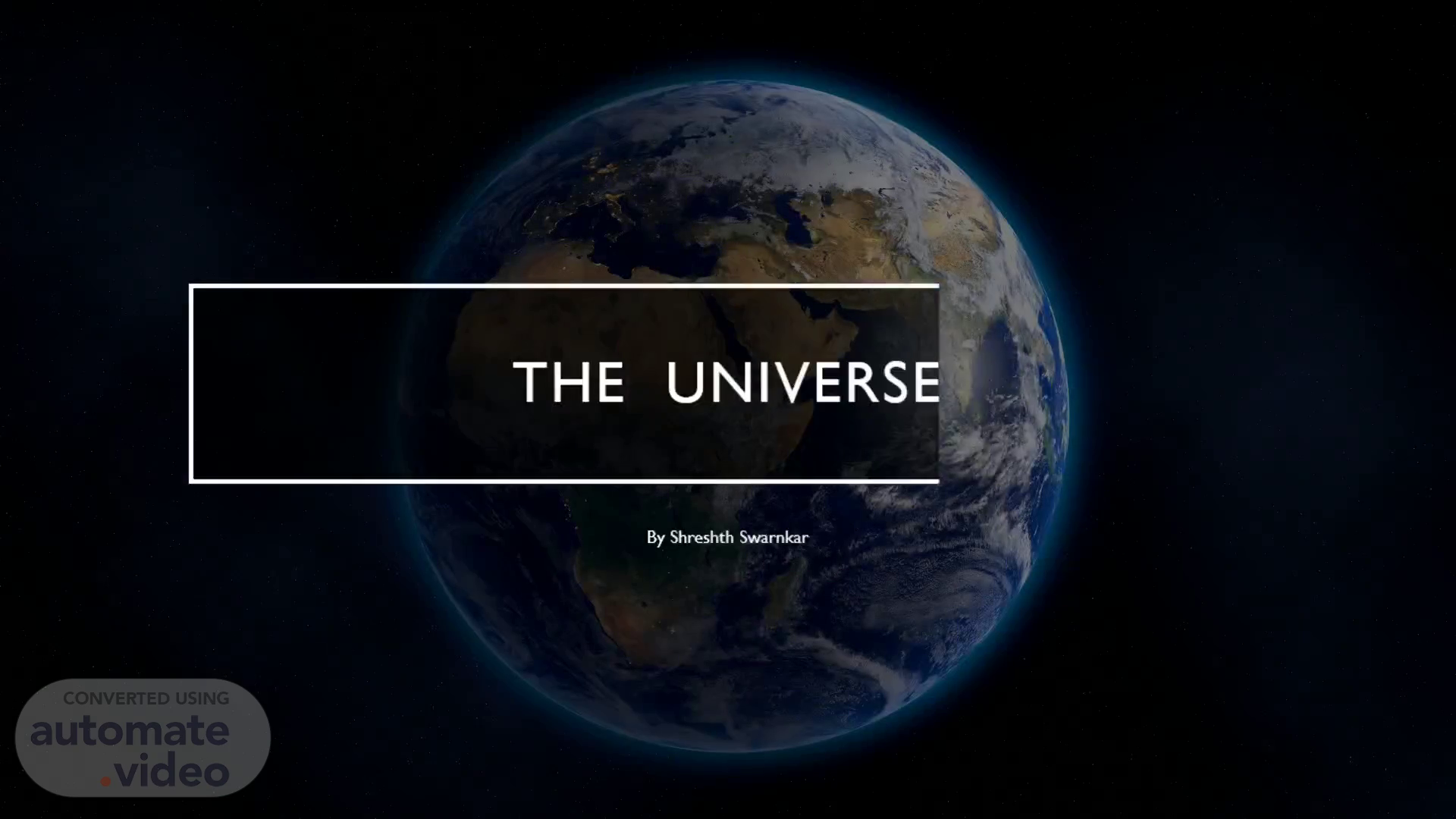Scene 1 (0s)
a satellite view of the Earth. The universe. By Shreshth Swarnkar.
Scene 2 (8s)
Topic covered in this presentation. CONSTELLATION.
Scene 3 (17s)
Constellations are groups of stars in the sky that have been given a name and often look like a particular shape. These stars are far away from Earth and are not connected to each other at all. By drawing lines between the stars, people can imagine shapes like objects, animals, or people in the sky. Different cultures around the world have had different names and numbers of constellations over time, depending on what they saw in the stars. Today, there are 88 officially recognized constellations..
Scene 4 (41s)
What constellations can you see in the night sky? The night sky changes as the Earth orbits around the Sun. The position of the stars in the sky changes as the Earth rotates on its axis. The stars appear to move from east to west, but it is actually the Earth that is moving. The constellations visible in the sky depend on the time of year and the observer's location on Earth. The Earth's tilt on its axis causes different parts of the Earth to be oriented towards the Sun at different times of the year, which affects the position of the stars in the sky..
Scene 5 (1m 9s)
The visibility of constellations in the night sky depends on the time of year and the observer's location. In the Northern Hemisphere, the constellation Pisces is visible in the night sky on September 21. However, the constellation Virgo is not visible on this date because it is on the other side of the Sun. Virgo's stars would only be visible during the daytime at this time of year. The brightness of the Sun makes it impossible to see the stars in Virgo during the daytime. To learn more about the constellations visible in the night sky, you can try a star finder activity..
Scene 6 (1m 37s)
Stars are the most recognizable astronomical objects and are the building blocks of galaxies. The age, distribution, and composition of stars in a galaxy provide insight into its history, dynamics, and evolution. Stars create and distribute heavy elements such as carbon, nitrogen, and oxygen. The characteristics of stars are closely related to the characteristics of planetary systems that may form around them. The study of stars' birth, life, and death is crucial to the field of astronomy..
Scene 7 (2m 1s)
Star Formation Stars are formed from clouds of dust scattered throughout most galaxies. The Orion Nebula is an example of a dust cloud where stars are formed. Turbulence within the dust clouds creates knots that have enough mass to cause gravitational attraction. The cloud material at the center begins to heat up, forming a protostar that will eventually become a star. Computer models predict that spinning clouds of gas and dust may break up into two or three blobs, which could explain why many stars in the Milky Way are paired or in groups. Understanding the process of star formation is important in the study of astronomy..
Scene 8 (2m 28s)
As a cloud of gas and dust collapses, a hot and dense core begins to form and gather more material. Not all of the remaining dust and gas becomes part of a star and can form other celestial objects such as planets, asteroids, or comets. Sometimes the cloud's collapse may not be steady, leading to the formation of unexpected objects like McNeil's Nebula. McNeil's Nebula was discovered by an amateur astronomer in January 2004 near Messier 78 in the Orion constellation. Observations with NASA's Chandra X-ray Observatory suggest that episodic increases in brightness of McNeil's Nebula may be due to the interaction between the young star's magnetic field and surrounding gas. Studying the interaction between young stars and their environment can provide insight into the formation and evolution of stars and their surroundings..
Scene 9 (3m 2s)
Stars and Their Fates The larger a star, the shorter its life, although most stars live for billions of years. When a star fuses all the hydrogen in its core, nuclear reactions cease, causing the core to collapse and become hotter. Hydrogen fusion continues in a shell surrounding the core, and the core pushes the outer layers of the star outward, causing it to expand and cool, becoming a red giant. A collapsing core of a sufficiently massive star may become hot enough to support more exotic nuclear reactions that consume helium and produce heavier elements up to iron. The star's internal nuclear fires become increasingly unstable, causing the star to pulsate and throw off its outer layers, enshrouding itself in a cocoon of gas and dust, and what happens next depends on the size of the core..
